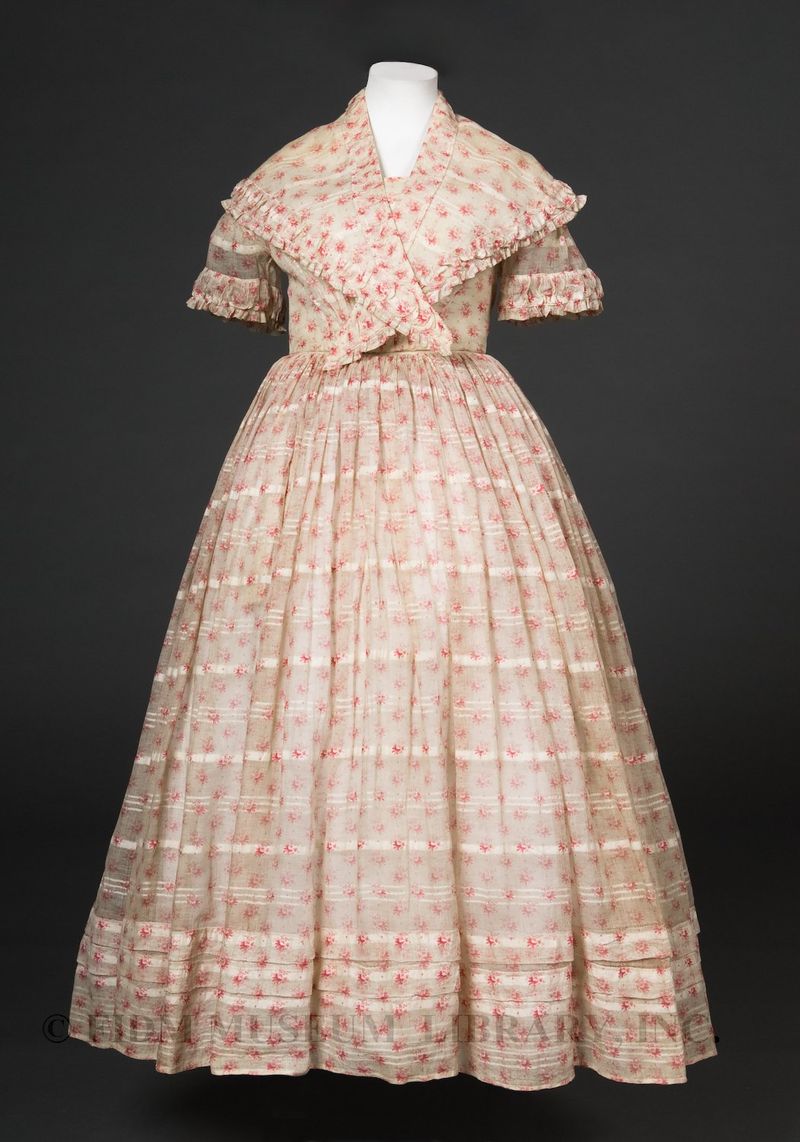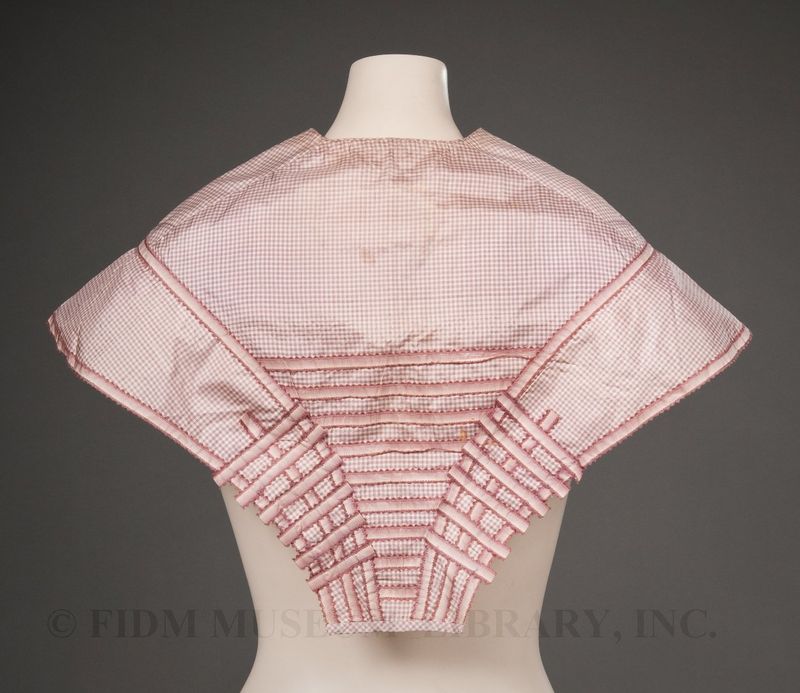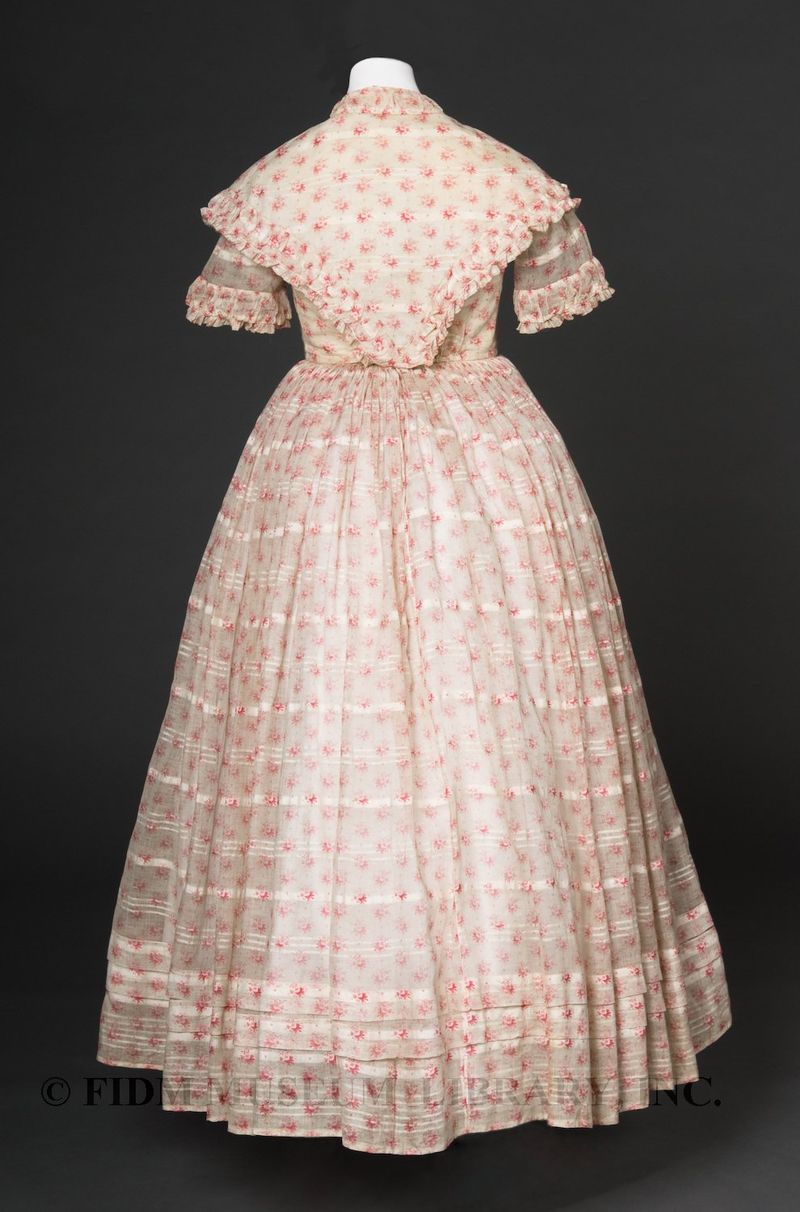Pelerine
 Pelerine 1855-60 Gift of Steven Porterfield 2007.897.13
Pelerine 1855-60 Gift of Steven Porterfield 2007.897.13
When researching historic garments, it's important to remember that the names we might give to a garment are not necessarily the same as what would have been used in the past. Though the garment above could easily be described as a short cape or cloak, in the past it had a more specific and individual name: pelerine. One of many types of garments used to cover women's shoulders during the 19th century, the name is possibly derived from a 1717 Watteau painting titled Pilgrimage to Cythera. The painting depicts a group of pilgrims either sailing to, or returning from, the island of Cythera, reputed birthplace of Aphrodite. The women pilgrims or pѐlerines, wear short, shoulder-covering cloaks over their dresses.
Pelerines created a smooth, sloped, shoulder-line, a desirable silhouette throughout much of the 19th century. Usually cut with a high-neck, pelerines were often made of the same fabric as the dress worn underneath. Trimmings usually consisted of coordinating ribbon, self-fabric bias or simple piping. Very popular in the 1840s, versions of the pelerine remained popular through the 1890s. These images from the New York Public Library Digital Gallery illustrate a variety of 19th century pelerines.
 Dress and pelerine 1848-52 Museum Purchase 84.5.2A-C
Dress and pelerine 1848-52 Museum Purchase 84.5.2A-C
Pelerines were often associated with relatively casual situations. The fashion press suggested ensembles including pelerines for visits to the country or the seashore. More formal pelerines were made of lace or delicate crochet. In March of 1853, Godey's Lady's Book suggested lace pelerines for "ladies who, for convenience or lightness of dress, wear low corsages [bodices] in the evening, but do not like to leave the neck entirely exposed." Wearing a pelerine in this situation hinted at exposed flesh, while still providing a modicum of modesty.
This pelerine, from a young girl's ensemble, has a more shawl-like shape. Some pelerines had extended front tabs, which hung down the front of the body. As the pelerine changes shape, the boundaries become hazy. With extended fronts, does it become a tippet or a mantle? Maybe a mantlet? If the back drops down the body, does it become a cape or cloak? Though it might seem like splitting hairs to some, when researching it's important to know all possible search terms. Readers, are there names or categories of dress that you find confusing? Send us your questions!

